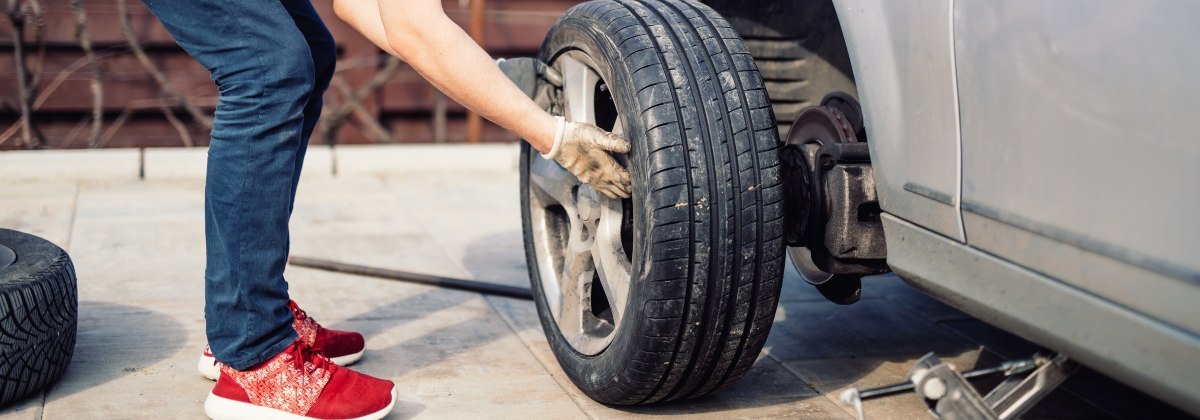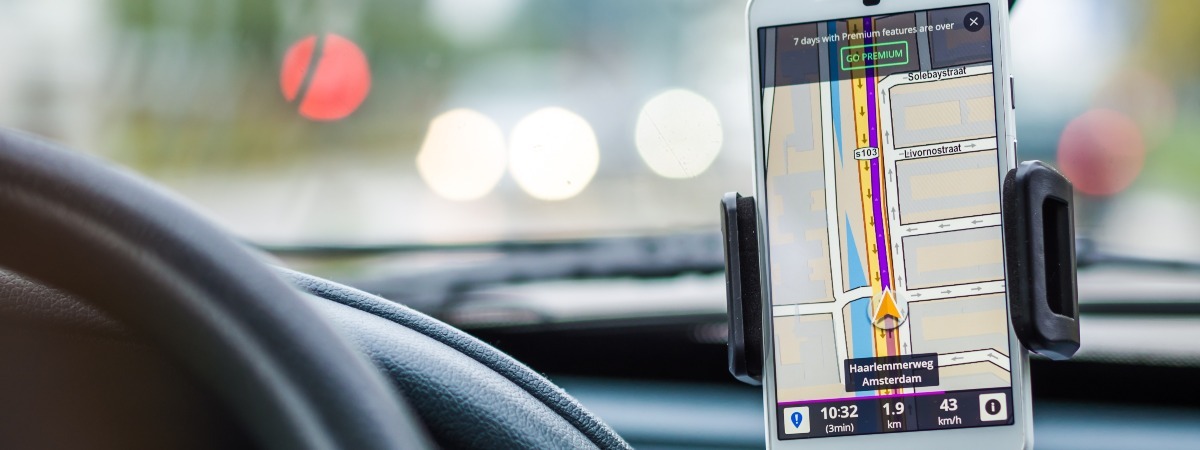If you’re planning a long-distance road trip, then the best thing you can do is make sure you are fully prepared. This way should anything go wrong, you are in a better position to deal with whatever comes your way. Here we share our 11 long-distance driving tips.
Driving Tip 1: Have An Emergency Kit
It is essential that before you set off on any journey of length, you make sure you have an emergency kit in the car. This kit should carry some essentials, just in case something should go wrong.
- First aid kit
- Spare bulbs
- Spare engine oil
- Map
- Torch
- Jump cables
- Hi-Viz jackets/waistcoats (this is a legal requirement in some European countries)
- Warning triangle
- Empty fuel can
- Sunglasses
- In-car phone charger
- Bottled water
- Non-perishable food
- Tyre pressure gauge (if your car doesn’t have tyre pressure monitoring)
- Spare fuses (if appropriate)
In winter, it is also a good idea to carry an ice-scraper, de-icer, blankets or warm clothing and a shovel, which could be used to dig you out of snow in extreme weather.

Driving Tip 2: Plan Your Route
One of the best ways to prepare for a long journey is to make sure you plan out your route in advance.
When planning, it is a good idea to try and avoid busy routes at peak times, to help keep your journey running smoothly. You should also give yourself plenty of time to reach your destination, leaving a bit of leeway for traffic.
When planning your route, it is a good idea to let someone who isn’t travelling with you the planned route, just in case something goes wrong. If you’re travelling to family, you should let them know roughly when you should arrive and alert them to any changes to the plan.
By planning your route, you also get the opportunity to make the most of the attractions on your route. Doing this will also give you a break from driving or being in the car. The government recommends taking a 15-minute break for every two hours you drive to prevent you from becoming fatigued. They also recommend driving no more than eight hours per day. If you are travelling further afield, then it might be a good idea to plan an overnight stay.
Making the most of the breaks on your route will turn a necessary journey into a fun road trip that everyone is sure to enjoy.
Driving Tip 3: Organise Some Entertainment
Long journeys can be tedious for passengers who often have nothing to do. This can quickly lead to tension, especially among younger passengers who quickly become bored. To help ease the pressure, it’s a good idea to think about entertainment and plan some in-car activities for the journey.
If you have younger passengers, you can’t go wrong with games like i-spy, the number plate game and car bingo. All require very little equipment and are suitable for a good range of ages, so are sure to keep everyone happy.
For those who prefer more modern entertainment, you might consider making sure their favourite game or film is available on their tablet or iPad, but whatever you do, don’t forget to pack the charger! You can get in-car chargers, which will charge multiple devices and these are sure to be a lifesaver if you have a full car.
For drivers, the entertainment options are more limited. It’s a good idea to download your favourite podcast or curate a playlist so you can also sit back and enjoy the journey.

Driving Tip 4: Get a Good Night’s Sleep
It may sound simple, but there is no better way to prepare for a long drive than to get a good night’s sleep.
Being tired behind the wheel is as dangerous as drinking under the influence of alcohol. Brake, the road safety charity found that fatigue is a major contributory factor in several crashes in the UK, with one in six crashes resulting in death or injury.
When you’re tired, your reactions become slower, and the risk of you falling asleep at the wheel increases. Common signs you are becoming fatigued include difficulty concentrating, yawning, heavy eyelids, eyes rolling and your neck muscles relaxing, resulting in your head drooping.
If you ever feel tired behind the wheel, make sure you take a break as soon as it is safe to do so. On the motorway, this will inevitably mean carrying on until the next available service. Winding down the window to get some fresh air and putting on some uplifting songs may give you a short boost, but you should never use these methods in place of a break.
Driving Tip 5: Fuel Up
Making sure you are fuelled up before you set off can help reduce your stress later on in the journey. Trying to find a fuel station on your route can be a faff and can quickly eat into your journey time.
On top of this, you may end up paying considerably more than you would normally –we all know that service station prices are massively inflated, but if you need fuel sometimes you have no choice.
To avoid paying more than you need to, make sure you fuel up near home.

Driving Tip 6: Check Your Tyres
Your tyres are your car’s only contact with the road, so it is important to make sure they are in tip-top condition by regularly checking them. However, it is a good idea to check the condition of your tyres a couple of days before embarking on a long-distance driving trip. This gives you time to get new tyres should you discover anything major wrong. However, it is still a good idea to do a final check of tyre pressures just before you set off.
Checking tread wear is easy using the 20p test. Simply insert a 20p into the groove of the tread depth if the outer band of the 20p is visible then your tyres are unlikely to meet the legally required tread depth and need changing. However, if the outer band of the 20p is not visible, your tyre tread depth is still okay. You should perform this test at various points across and around your tyre, to make sure you don’t have uneven wear.
The 20p test alone is not enough, as it is not just your tread depth you need to check. You also need to take a look at the overall condition of your tyres, looking out for bulges, bumps, rips or tears.

Driving Tip 7: Check Fluid Levels
Many of us are quite good at checking our oil level and our windscreen washer fluid and making sure they are topped up all year round, but before setting off on a long-distance driving trip, it is a good idea to check other fluid levels too.
Checking your brake fluid, power steering fluid and air-conditioning fluid can help prevent any nasty surprises on your road trip.
Driving Tip 8: Check Your Lights
Number eight in our eleven long-distance driving tips is to check all of your lights are working before you set off. The easiest way to do this is with someone else, then you can sit in the car and switch on your different lights, put the car in reverse to check the reversing lights and apply the brakes to check the braking lights. If you don’t have someone to help, you can check the lights by looking for a reflection in your garage door.
It’s also a good idea to make sure your lights are clean. Dirt can quickly build up over winter which can limit the amount of light emitted from your headlights.
Even if all of your lights work when you check them, it is still a good idea to carry a spare bulb for headlights, brake lights and reversing lights. Then if any of the lights should stop working, you can pull over and replace it quickly.

Driving Tip 9: Pack Drinks & Snacks For Your Journey
Don’t forget yourself when heading on a long car journey. It is important that as a driver you stay well-hydrated and keep your energy levels topped up. If you don’t carry bottled water in the car, make sure to take a refillable water bottle with you, so you don’t always have to stop for a drink.
You should also pack some snacks. It is best to avoid fatty and sugary snacks which will give you a quick burst of energy, then leave you sluggish. Instead, try and opt for healthier options like nuts, or low-sugar flapjack which will release energy slowly.
Another long-distance driving tip is to avoid large meals which may make you feel sleepy. Instead, break your meals down into smaller portions and stop more regularly to eat.
Driving Tip 10: Get Your Sat-Nav Ready
An essential aspect of any long-distance driving trip is knowing your route. To make sure you’re prepared you should make sure you charge and set up your satnav (if using one) the night before you plan to travel.
Many satnavs have a recent destination setting, which enables you to get organised. You can input your journey the night before and then on the day of travel you can select it from the recent addresses option, rather than inputting all the information. This can be useful if you have young children who want to get on the move as soon as possible.
If your satnav is built into your car’s infotainment system, you don’t need to worry about charging up but you can still programme your destination the night before so that you’ll all set.

Driving Tip 11: Explore New Options
Don’t be afraid to make the most of your journey. By using the journey itself as an opportunity to try new things or visit new places, you are sure to keep everyone happier.
So there you have it our 11 long-distance driving tips which are sure to come in handy as you head to see family near and far this Christmas period.
If you’re heading to Europe you may also want to take a look at our driving in Europe blog.
Driving Tip 12: Prepare for seasonal weather
Prepare for seasonal driving conditions in the winter and summer months. As the conditions on the road change, the demand on your car is different and certain parts are relied upon more during warmer, dryer months than when it is wet and colder.
Book your vehicle in for a vehicle check to prepare your car for a long drive in seasonal weather.